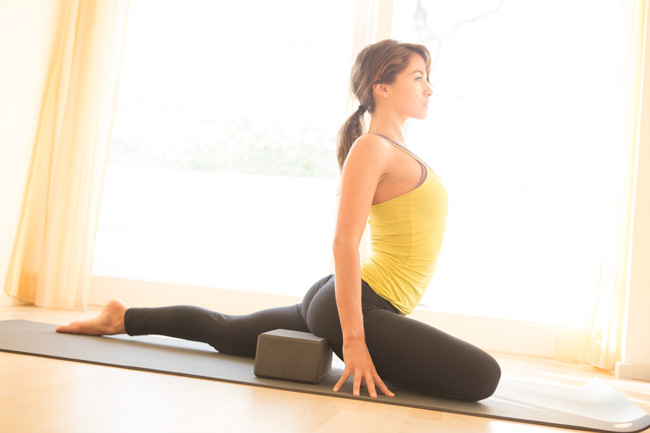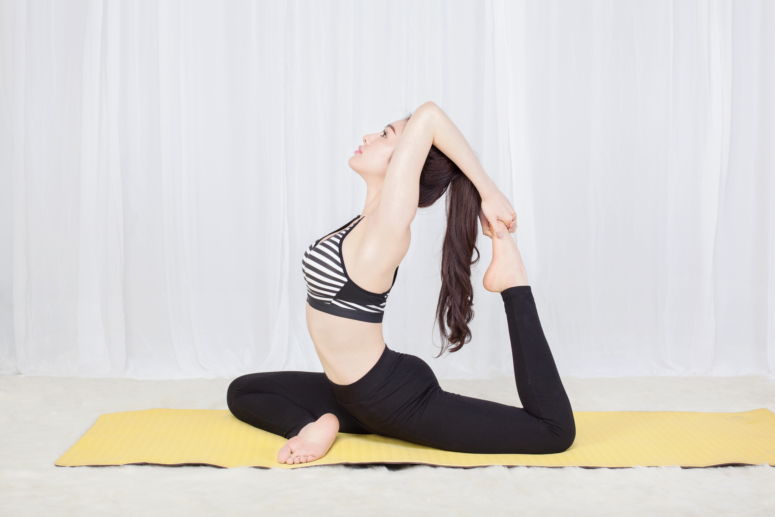Kapotasana or the Pigeon Pose is excellent hip opener for all those who spend long hours sitting or maintain wrong posture. Stress and tension can build up in the hips and create tightness. Practicing pigeon can make for supple, more flexible hips. Stretching out your hips can help prevent lower back pain, or knee or hamstring injuries.

Benefits:
If practiced consistently, pigeon pose can:
- Stimulate the internal organs
- Stretch deep glutes
- Stretch groin and psoas (a long muscle on the side of your vertebral column and pelvis)
- Relieve impinged piriformis (characterized by lower back pain, pelvic pain, pain in the buttock or hip, and/or sciatica) and alleviate sciatic pain
- Help with urinary disorders
- Improve your posture, alignment and overall flexibility.
- Release the negative feelings and energy from your system.
Instructions:
- From Downward Facing Dog, step both feet together and bring your right knee forward between your hands, such that your outer right leg is resting on the mat.
- Drop your back leg to the ground. Keep the back leg turned under.
- Keeping your front leg bent, place it shin down on floor behind your right wrist.
- Align your right knee straight in front of your right hip and your right shin parallel to the front of your mat.
- Lower your hips, bringing your left knee to the floor and walk your left foot back a few inches to straighten your left leg directly behind your left hip. Rest the top of your left foot on the floor.
- Walk your fingertips out to 18 inches in front of your right shin and bring your elbows to the floor, forearms parallel to each other.
- Draw your right hip back, and your left hip forward
- Take quite a few breaths in Pigeon (3-7 breath) . Make sure your front foot is well flexed. You may feel this pose in your hips as they open up.

For Advanced:
- As you push your pelvis back, reach your back leg back. Reach your knee away from your hip (open your hip socket) and reach for your toes.
If there is any knee pain at all, modify and do floor figure four. Start to reach the arms forward with palms on the floor and lower the torso. Lower down as far as you can without pain. The forearms is a good place to start.
Note: Always consult your physician and research a properly trained teacher before you start a yoga practice.